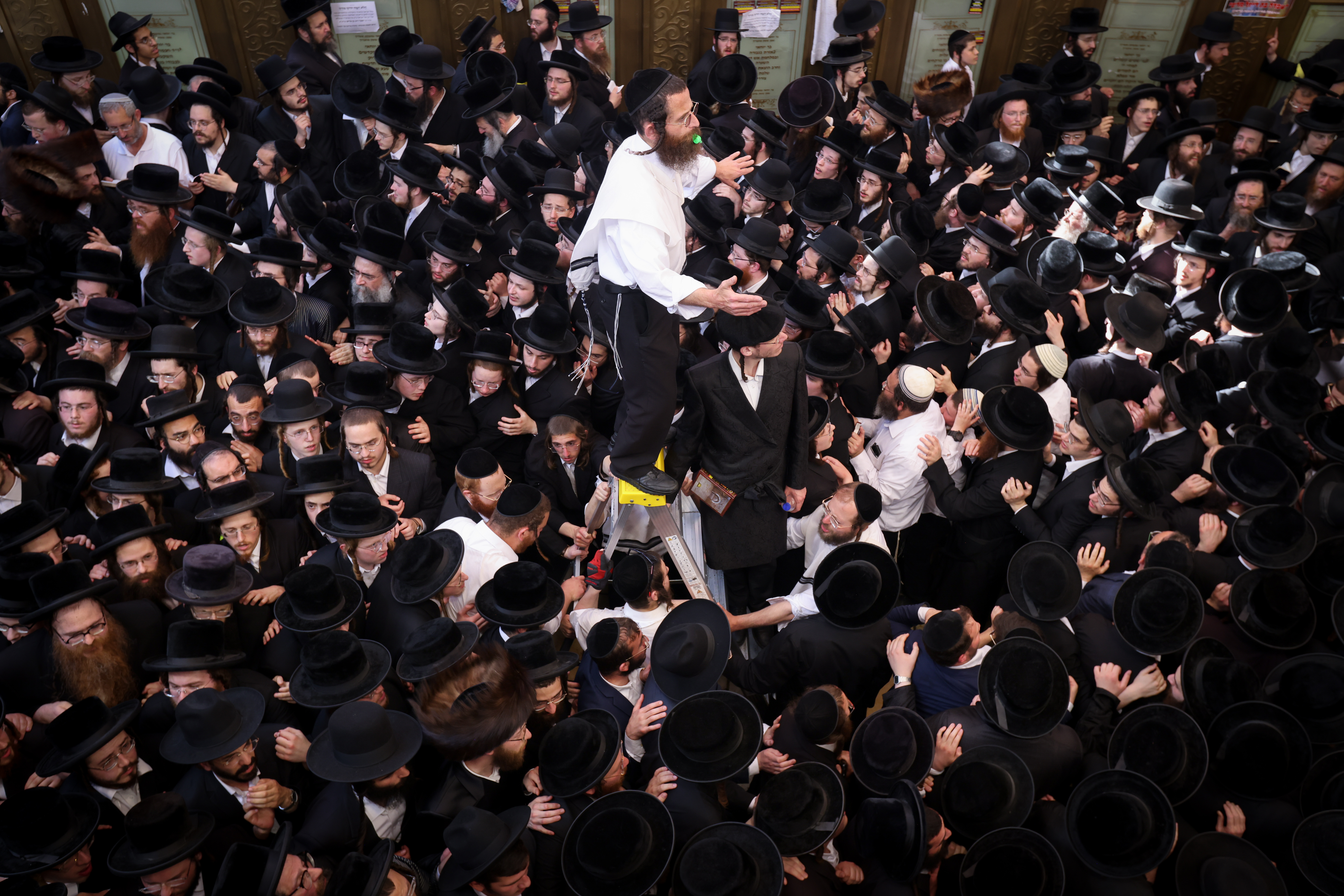The Meron Disaster as Reflected in Ultraorthodox (Haredi) Society Media
For years, ultra-Orthodox leadership has been protesting that the internet will bring rack and ruin on the entire community and on individual users, however, that the internet, and especially the social networks, play a major role in the internal reforms that the ultra-Orthodox must introduce.

Photo by David Cohen/Flash90
“No insurance company is willing to write a policy for the Lag ba’Omer events in Meron,” screams the headline. While the scars of the Meron disaster in 2021 have yet to heal, and the commission of inquiry continues its work, it seems that the lessons have not been learned. The plan for the Meron 2023 celebrations is based, in part, on tripling the number taking part in the event and ignoring construction and safety standards. I could not stop shuddering when I saw the photos and texts published after the disaster. In research conducted on new media in the ultra-Orthodox sector at the Israel Democracy Institute, I examined more than 1500 items that appeared in late April and May of 2021 on ultra-Orthodox news sites and social networks. It goes without saying that most of them addressed the Meron disaster.
The Meron disaster reveals that new media platforms serve the critical functions of providing information, accepting responsibility, casting blame, and recognizing trauma—functions almost totally absent from the traditional media (the mainstream print press). A comparison of the official new media—the Kikar Shabbat and Behadrei Haredim news sites—with the social networks, reveals that whereas the former sounded very few critical voices, the social networks raged with them.
Dissemination of Information
What emerges as a main finding is that both the news sites and the social networks focused primarily on information. They tried to provide their worried audiences with content that would make them aware of what had happened in Meron, in the hospitals, and at the Institute of Forensic Medicine in Abu Kabir, and also to console the bereaved families. Both the news sites and the social networks filled the five classic media roles—information, correlation, continuity, entertainment, and mobilization. A survey of the Haredi media after the Meron disaster finds all of these, except for entertainment, of course.
The socialization and mobilization of the community created moving scenes of mutual assistance and aid. Both the news sites and the social networks posted the phone numbers of families living in the north or near Abu Kabir who opened their doors to host families that would not be able to make it back home before the start of the Sabbath. Charitable funds were set up, and there were private initiatives to donate food and games to the bereaved families and children; many responded to the appeals and came to donate blood.
Conferring Status and Enforcing Social Norms
The media scholars Lazarsfeld and Merton (1948) emphasized the media’s functions of conferring status (on an individual or an event) and of enforcing standards by means of harsh criticism of improper conduct. They also proposed a negative function, drugging media consumers into settling back in their armchairs and keep reading or watching, without taking any action.
An analysis of the conferral of status on events finds that both the news sites and the social networks continued to confer status by extolling the rabbis. Photos of rabbis learning about the disaster and then paying visits to houses of mourning flooded the media. But whereas the official sites conferred some status on the Haredi lay leaders, the social networks mainly castigated their improper conduct and challenged their status. The criticism, anger, and frustration led to light fingers on the keyboard.
The Haredi sites sounded only a very little bit of criticism, but the social networks screamed for the enforcement of standards by castigating improper conduct. The criticism was not only of the police’s lack of professionalism and of the performance of the government and politicians. Posters on social media also confessed their sins—the sin of not heeding instructions (during the pandemic as well), the sin of disregarding the safety rules, and the sin of overcrowding at Haredi events.
The Ultraorthodox websites, like the traditional partisan press, tended to produce one shocking photo after another, multiple interviews with ZAKA (first-responders), more criticism and explanation of the slow work at the Forensic Institute in Abu Kabir—before moving on to political discussions about the formation of a new government. By contrast, the social networks called loudly for action, for change, for sweeping out the stables. They called for self-reckoning by the politicians and community bigwigs and by rank and file members of the community.
The Mental Health Challenge
The social networks—Facebook groups and forums—demonstrated another significant seated change that has been taking place in Haredi society in recent decades recognition of the complex and challenging issue of mental health. Users posted the phone numbers of therapists and explained how to identify anxiety and post-trauma. The emotional problems experienced by the first responders and of the victims of anxiety who had been at the site, were covered extensively.
For years, ultra-Orthodox leadership has been protesting that the internet will bring rack and ruin on the entire community and on individual users. They were terrified by the possibility that people could go anywhere and access any site with the press of a key. It seems, however, that the internet, and especially the social networks, play a major role in the internal reforms that the ultra-Orthodox must introduce. Only when individuals are able to make their voice heard and join with others and proclaim that “the king is naked,” will deep-seated change in the society be possible.
